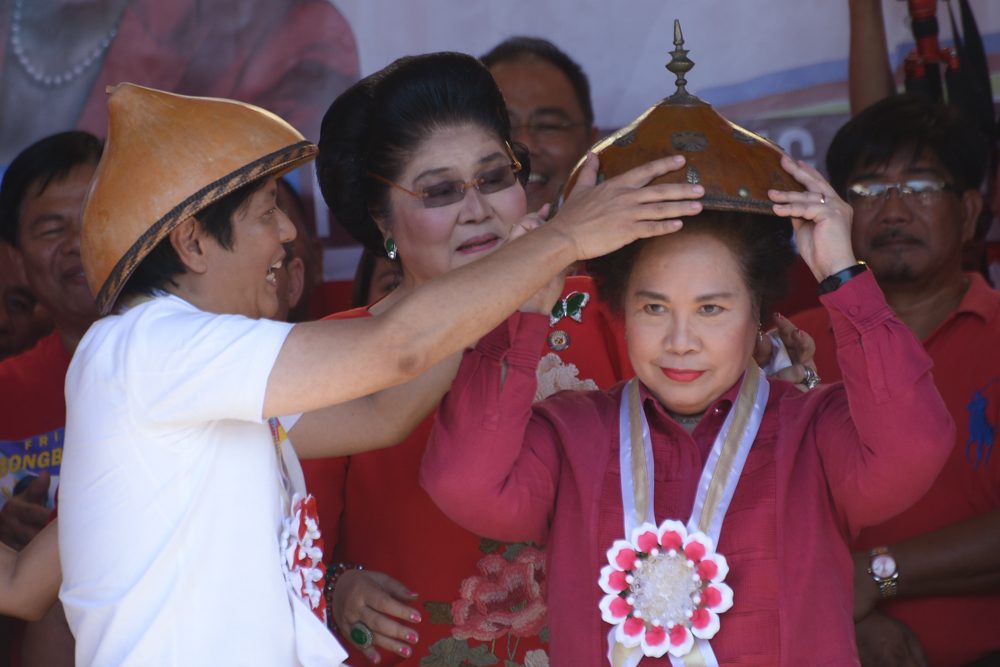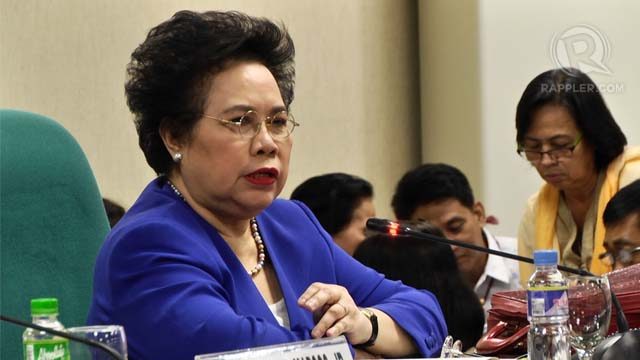SUMMARY
This is AI generated summarization, which may have errors. For context, always refer to the full article.

This compilation was migrated from our archives
Visit the archived version to read the full article.
MANILA, Philippines – When Miriam Defensor Santiago first sought to become Philippine president more than two decades ago, her campaign was made for the movies. A year before election day, she figured in a near-fatal car accident but survived, and went on to lead the race.
Her lead in the first few days of vote counting – the elections were manual then, and consolidating and canvassing the votes from the provinces took weeks – was eroded, however, and former defense chief Fidel Ramos was declared winner with a lead of a million votes.
Santiago filed a protest with the Supreme Court, saying that election results were manipulated during the power outages while votes were being canvassed. The SC, serving as the Presidential Electoral Tribunal, later considered the case moot when Santiago ran for senator and won in 1995. It said seeking a new post indicated that she was no longer interested in pursuing her protest.
In 1998, she ran again for president but finished 7th in a 10-way race.
Fast forward to 2016, and Senator Santiago’s 3rd bid for the presidency so far does not seem to be as promising as her 1992 campaign. Once the darling of the press due to her strongly-worded and quotable statements, she has kept herself out of the spotlight for most of the time, even after announcing her candidacy.
She announced last year during the launch of her second book of pickup lines, Stupid is Forever More, that she would be running again for president. Since then, her ratings in major pre-election survey have not improved; she has consistently placed at the lowest rank.
Santiago’s voter preference in Social Weather Stations surveys have dipped the lowest from 10% in November to 4% in February. While her numbers have remained stagnant at 3-4% in Pulse Asia polls.
During the 1992 presidential elections, Santiago won in a number of Luzon provinces: Zambales, Rizal, Bulacan, Laguna, Camarines Norte and the capital Manila. She also scored the most votes in the Panay islands, Negros Occidental, Zamboanga, Cotabato, Sultan Kudarat, and South Cotabato.
Looking at the surveys for 2016, the strong support for her in these provinces has dramatically faded. The numbers show she has no hold on specific regions, not even her home region of Western Visayas. The highest rating she got was 10% in Metro Manila.
With less than 3 months to election day, is there a way for Santiago bounce back? How can she revive the so-called Miriam Magic?
1. Unleash the debater
First thing Santiago must do, according to political analysts, is to show up in forums and debates – or at least broadcast her position on recent issues.
“She’s been rather silent on many of the issues, making people forget about her. There are several high profile issues where she did not respond and other presidential candidates responded – that sort of keeps her out of the public eye,” public administration professor Prospero de Vera Jr said.
Santiago is known for her strongly-worded comments on issues. This made the feisty lady senator a darling of the media and the youth even during the first time she ran for president in 1992, said anti-corruption advocate Vincent Lazatin.
If she would be as opinionated as she had always been, Lazatin said, her “higher visibility” could be “translated into votes.”
“Laying quite low” in a presidential elections gives an impression that Santiago is a little “half-hearted” in joining the race. “It didn’t seem she joined the race like in 1992, full of fervor and really a desire to win,” Lazatin added.
The senator must come out in “her best fighting form,“ said De Vera. She must remind the public of how a brilliant public official she is through presidential debates organized by the Commission on Elections.
“I think the best opening for Senator Santiago is the official presidential debate. That’s her strength – she has a very good grasp of issues, she’s a very good debater, and she can shine during the debate. I think that’s the best opening for her candidacy to pick up,” De Vera said.
2. Overcoming health issues
Both De Vera and Lazatin identified the senator’s health condition as the main hurdle in her campaign.
“Her problem is her health, meaning what is limiting her from going around and campaigning is really because of her poor health,” De Vera said.
At a retiring age, the senator may find it hard to mount the vigorous national campaign like the one she had 24 years ago.
If she is serious about winning she must amplify her campaign in other platforms than provincial sorties, which are physically exhausting for any 70-year-old.
“She doesn’t have to physically get interviewed, but she should be issuing press statements on important issues that the public is talking about – Mamasapano, she was silent about that, all these problems in the DOTC (Department of Transportation and Communications), she is silent about that,” De Vera said.

The senator must also consolidate her huge following on social media. While she has online activities here and there, analysts say these have not been very pervasive and “overwhelming” as she hoped they would be.
It may also help if she will be clear about her health condition early in the campaign period.
Although she previously said she had won her battle with stage 4 lung cancer, many people still press her to disclose her medical records – something she has refused to do. But this could be drawing voters away from her and towards more “viable” candidates who have stronger chances of winning.
3. Consolidating youth support
Vice presidential aspirant Ferdinand “Bongbong” Marcos Jr, Santiago’s running mate, said he would campaign for her by talking to his leaders in several local areas. As he explained to reporters during a local sortie that their campaign will be two-way, he will cover the local sector while Santiago will focus on the youth.
But this strategy might not work very well for the standard-bearer. While Marcos is strong in regions such as north Luzon and some parts of Mindanao, some of his allies are only keen on supporting him, not their tandem.
For instance, Ilocos Sur Governor Luis Chavit Singson supports Marcos for vice president, but it’s Jejomar Binay he wants for president. In La Union, the Ortegas and most mayors support Marcos, but go for Manuel Roxas III for president.
This is why it is crucial for Santiago to get the 20-million strong youth vote. The tough-talking senator appealed to young people because of her progressive ideas, intellect, and colorful language. She has topped most university polls.
Youth supporters even staged their own proclamation rally for Santiago on Valentine’s Day.
In a Facebook survey last year, Santiago got 48.36% of the votes. In university surveys, she got 86% and 71.3% in the University of the Philippines-Los Banos and Polytechnic University of the Philippines, respectively.
Lazatin said, “The electorate is largely young and I think if we [see] a 1992 Miriam today certainly she could fire up the imagination of the young people.”
Comelec data also show that voters aged 18 to 35 have a higher literacy rate at 97-98% compared to the middle-aged ones.
Santiago’s media team said that instead of touring different provinces and municipalities, she will be granting speaking engagements in schools and universities. But for De Vera, targeting the youth should not be confined with this strategy.
“Miriam does not have a monopoly of going to universities,” he noted, saying that other candidates are also doing it.
“Engagement with schools, that has to be accompanied by aggressive political ads, aggressive social media,” he added.
In theory, Santiago is a strong candidate in this elections. She has a solid grasp of issues and the law, given her academic achievements. She has served in all 3 branches of government with a clean record. She is the most experienced among the candidates.
What is missing in her campaign is the umph that she has demonstrated in all these decades – when her words and ideas stirred discussions, even controversy, in Philippine media, and excitement among those who will troop to the polling precincts on election day. – Rappler.com
Add a comment
How does this make you feel?
There are no comments yet. Add your comment to start the conversation.